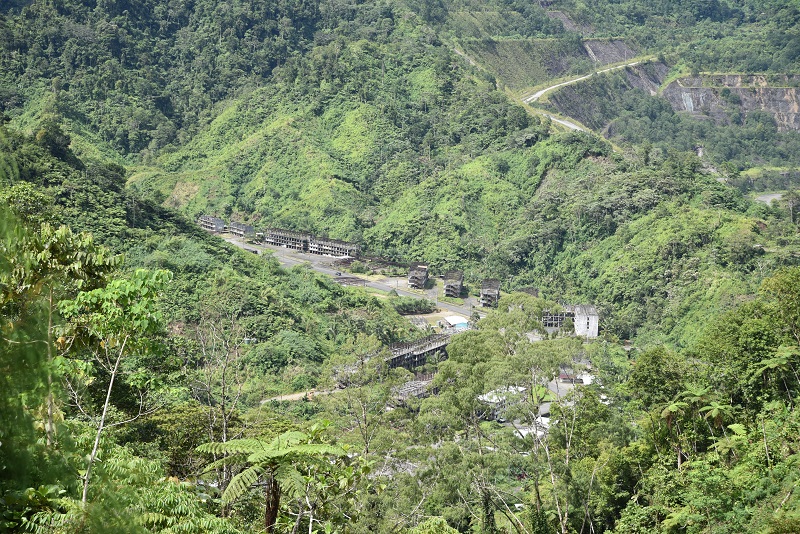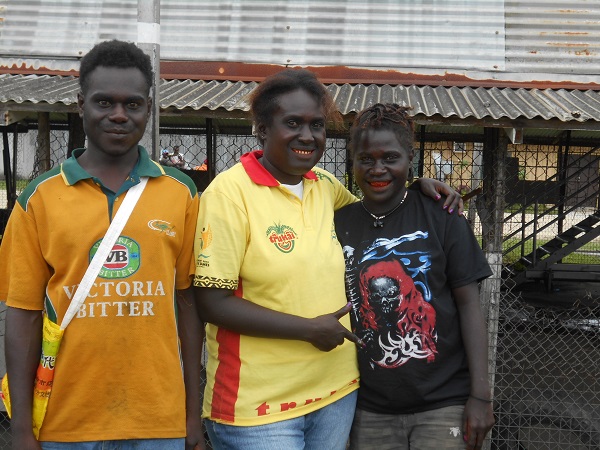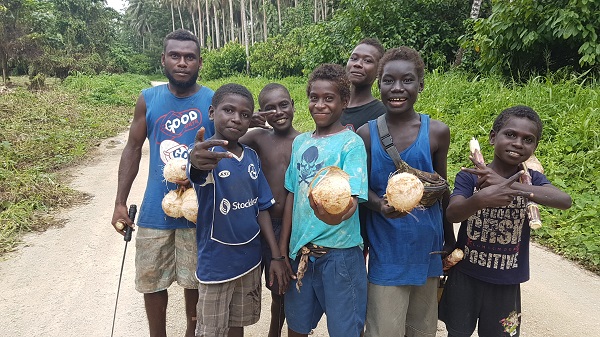Dawn of a new country
Nimal Siripala
A Little known tiny Pacific Island Bougainville is now heading for its independence, and to break away from Papua New Guinea. International observers and media personalities have been descending at Buka airport since early this week. The former Irish Prime Minister, who has successfully negotiated the Belfast Agreement (Good Friday Agreement), is in Bougainville heading the Bougainville Referendum Commission (BRC). The referendum starts today 23 November and ends 7 December 2019. The results will be declared most probably on 20 December.
If the majority says, yes, to secede and IF PNG government ratifies the secession according to the Bougainville Peace Agreement (BPA), then Bougainville will become the newest country in the world most probably in 2020.
Behind this, there is a story that tells how the exploitation of economic resource of a country leaving the communities aside and sharing the benefit between a company and central government destroyed its economy and tore harmonised society apart leaving its scars for generations to heal
The Bougainville conflicts started in 1988 and continued ten years. It was a bloody one that costed several human lives, destroyed the vital infrastructure of the country including roads, bridges. hospitals, schools and various government buildings. Rapes and massacres became the norm of the conflict. Involvement of many factions; the Bougainville Revolution Army (BRA), PNG Defence Force, Bougainville Resistance Force (BRF) and splinter groups of BRA made it a multi-layer conflicts and still there is a no go zone controlled by one of those groups lead by once Ponzi scammer who declared himself as the king of Me’ekamuli with his militiamen.
However, during the reconciliation period before the referendum, many Me’ekamuli factions apologised and decided to support the government’s referendum effort,
Unfortunately, this catastrophic conflict was not much known to the world at that time. The bias of Australian mainstream media towards the PNG government, which had the backing of the Australian government, gave the conflict low profile and did not report another side of the story. The individual journalists and filmmakers who sneaked into the war zone were the ones who made it public.

Panguna mine
However, the world largest open-pit copper mine of that time, Panguna mine, with billions of tons of copper and some gold was the centre of the Bougainville conflict.
The Panguna copper mine which was in the heartland of South Bougainville commenced its operation in 1976 under the name of Bougainville Copper Ltd as a subsidiary of Rio Tinto the largest mining company in Australia.
The royalty paid by the company to PNG government made about 20% of the government income, but according to some estimates only around 2% of it went back to Bougainville. This made PNG a country of a strong economy in the region and during that period a large number of Sri Lankan science teachers, and professionals got job opportunities in the capital Port Mosby but not in rural Bougainville where the wealth was created.
In the other hand, in the town, close to the mine new settlements were built exclusively for expatriate workers of the mine and the facilities needed for them were made available. The workers who were recruited locally were mostly not from the area but many other parts of PNG. This further separated the locals from mining activities.
The other major factor of the conflict is land ownership. Unlike in other Asian countries in PNG around 97% of the land is belonged to the people and the government portion is around 3%.
When geological surveys found that Panguna mountain is rich with copper and gold the company negotiated with leaders and paid them for releasing the land for exploitation. What was paid was a tiny fraction of the value of the resources..
However, this mode of negotiation was not considered legal according to the tradition of the community. In Bougainville the land inheritance is matrilineal; meaning customary land is inherited and passed on through the mother’s lineage. This implies the real owners of this land are the women.
Although women were against the deal it was signed between the company and some leaders. The generation who was grown up later had got nothing for the lands. Also, at the time the mine was established, there were no environmental regulations in force. The river flows nearby got polluted due to mine operations and lost the fish population and severely affected the services river was giving to the communities.
In 1988 a senior woman, representing the Panguna Land Owner Association issued a demand to the company to pay compensation for the use of land and to renegotiate for a new deal.
Several rounds of discussions went and neither party were able to agree. One of the leaders of landowners was a worker, Francis Ona, in the mine and he knew very well set up of the mine and he formed a group of militants and started sabotaging the mine work. The main blow to the mine operation came when attackers crippled the running of mining operations by blowing up the pylon supplying electricity to the mine. With this success, the group declared themselves as the Bougainville Revolutionary Army.
The PNG government responded by sending the forces to quell the rebellions. The rebellion had the opportunity to collect guns and other armaments, from the jungles, where they were abandoned mainly by the defeated Japanese army several years ago. Besides, a PNG army officer, Sam Kauna, defected the army and joined the rebellion and became the commander of the Bougainville Revolutionary Army.
This has intensified the conflict and Australia as the PNG’s early protector-initiated peace talks, but there was no sustainable breakthrough all though some agreements were made. However, at the particular time both agreed for a truce under UN supervision and the day when international truce monitoring team arrive Arawa (Then capital) the PNG force commanders without meeting the delegation left Arawa releasing prisoners and creating a vacuum where there is neither any law and order nor police force.
This created a chaotic situation and BRA had no control over. This allowed forming any type of arm group by anyone. So many groups were formed and some were formed by criminal gangs and some were formed to get revenge on personal feuds. There were splinter groups of BRA claiming them as the real BRA fighters. In the meantime, The Bougainville Resistance Force (BRF) was formed to fight against those atrocities.
A full-blown crisis started and rape and murder were common features. Women and children gathered in refugee centres established in the bush and children suffered a lot with no food and medicine. When inter fighting reached at an unbearable level a clan from North of Bougainville invited PNG forces back to Bougainville.
PNG defence forces arrived Buka and imposed an embargo on the country and also took the side of BRF. The blockades were enforced and people severely suffered from no basic food and medicines. From this point onwards country had intensified war machine and also several peace talks were also held. The PNG defence force could not quell the BRA fighters and there were several massacres by both sides. Without seen any end to the war then Papua New Guinea prime minister Julius Chang decided to hire mercenaries but was opposed by the defence chief.
This made some space for peace negotiation. Other than that, there was a strong voice from the women for peace. They were the ones who suffered most and there was one instance that one women leader went to the front and addressed the rebels saying that she did not come to negotiate the peace but to demand the peace.
At last New Zealand was able to make some breakthrough and after three rounds of talks, the region was declared as Autonomous Bougainville Government until it becomes an independent state after the referendum in June 2019.

The probability of getting yes to cessation is very high. The phase after independence is critical for the nation if they do not get the necessary assistance from the rest of the world. Agreement and disagreement are surrounding the opening of the mine for operation. It will take billions of dollars to start the mining operation after reconstructing the infrastructure destroyed. The time frame for that will be a period of five years. Currently, there is no proper tax collection, and administration is lack of capacity to take the challenge. The police force is still being trained by the New Zealand Police and no defence force to handle a volatile situation without assistance from Australia and New Zealand.
The power supply is mainly on fuel and intermittent. Above all the incidence of corruption and misuse of the public fund were either similar or worse compared to that of PNG. Other than the country of its economic and social issue may be embroiled in the geopolitics of the region, China vs Western powers.
Writer is former Director of Ministry of Finance and Planning Sri Lanka and Data Analyst at Statistic New Zealand. He is currently an adviser to National Statistic Office Solomon Islands. He has master degrees from Russia, The Netherlands and has been trained in the USA as a National Accountant and Environmental Economist. He has served in Republic of Palau, Bougainville and West Britain Island of Papua New Guinea.


